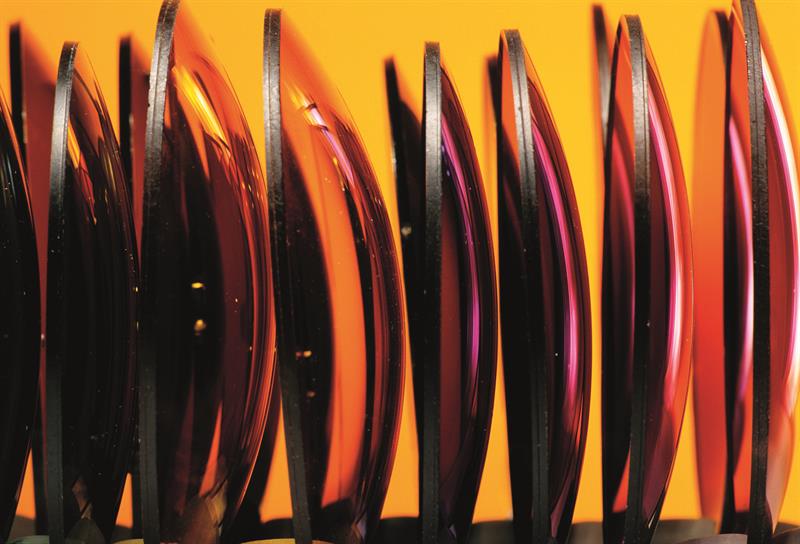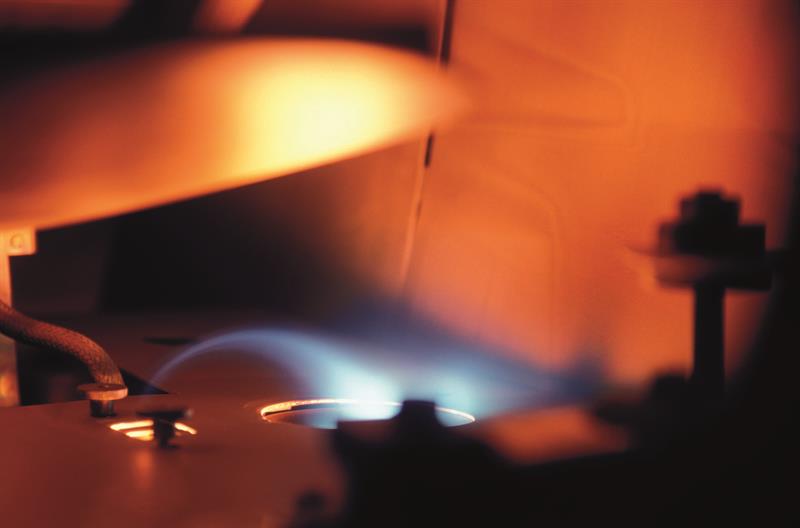It is hard to think of another invention that is not only used every day for spectacle lenses, but revolutionised the whole of observational optics and just about every other field that relies on optical image-making. That invention is surely the anti-reflection (AR) coating. One would think that the inventor would be famous; even that their name would be given to the coating (actually, it was – sort of). But no one has ever ordered a pair of ‘Blodgett’ coated lenses.
The name belongs to a remarkable American scientist, Katharine Burr Blodgett (1898-1979), who became, among other achievements, the first woman to be awarded a doctorate in physics from the University of Cambridge. Although her upbringing was comfortable financially, her life began in tragedy as her father, a patent lawyer for General Electric (GE), was shot and killed shortly before her birth by a burglar who subsequently hanged himself. George R Blodgett and Katharine Burr had an elder son, also George, who was to disappear while piloting a light aircraft over the jungles of Costa Rica in the 1950s.
After Katharine was born her mother moved the family from their home near the GE research laboratory in Schenectady, New York, to New York City and then to France. After a return to New York a few years later Katharine’s flair for science began to show itself as she graduated from high school at the age of 15, earning her a scholarship to Bryn Mawr College in Pennsylvania where she studied physics and mathematics, earning her BA degree in 1917. She had become familiar at the Schenectady GE lab through her visits during college vacations. Some of her father’s colleagues introduced her to the renowned research chemist, Irving Langmuir, who would become the 1932 Nobel laureate in chemistry. While showing her around his lab, Langmuir soon recognised her academic potential, encouraging her to study further and wider, pointing out she would need to obtain a Master’s degree if she ever wanted to work there.
Katharine took Langmuir’s advice and enrolled at the University of Chicago to work on the adsorption of gases on charcoal, graduating with a Master’s in chemistry in 1918. That project had important implications for the invention of gas masks, following the publication of her influential paper on gas mask materials in Physical Review (Studies of the Adsorption of Gases by Charcoal. II, Vol 14, Nov 1919, pp 394-402 (with Harvey B Lemon)). Her research also brought her back to Langmuir’s attention, resulting in an invitation to work with him; in the process making Blodgett the first female scientist to be employed by GE.
Initially Langmuir set Blodgett to work on perfecting tungsten filaments in incandescent lamps, a problem that he had been investigating for GE for some years. He had found that chemical reactions catalysed by the hot tungsten filament could be minimised by filling the lamp with nitrogen (later argon was used) and that twisting the filament into a spiral would reduce the amount of tungsten vaporisation. He had received a patent for some of this work in 1916. After six years of collaboration Langmuir arranged for his protégée to study under Ernest Rutherford at the Cavendish Laboratory, Cambridge University, which led to Blodgett’s attainment of her doctorate in physics. On her return to Schenectady she and Langmuir continued their work on improving the incandescent lamp, while also carrying out the investigations into electrical discharges in gases that would lay the foundations of plasma physics. But they also continued studies into surface chemistry, an area that Langmuir had been interested in for some time – the one that was to earn him the Nobel prize and set Blodgett on the way to her optical invention.

Langmuir had developed the concept of ‘adsorption’, the adhesion of atoms or molecules to a surface. His important discovery was that the particles (the adsorbate) accumulating to adhere to the surface of the host substance (the adsorbent) would do so in a layer just one molecule thick, forming a monolayer, or monomolecular layer. He and Blodgett looked at ways of producing oily monomolecular films on water, resulting in the development of the apparatus that contributed to his Nobel prize nomination and became known as the Langmuir-Blodgett trough.
A significant problem with thin film research was the difficulty in measuring accurately the thickness of these films. Existing methods were accurate to only a few thousandths of an inch; but Blodgett devised an instrument, known as the ‘colour gauge’ that improved accuracy to about one millionth of an inch. This she achieved after discovering, in 1933, that monomolecular layers of stearic acid, each of about one ten-millionth of an inch thick, could be deposited successively onto a plate lowered into a solution, enabling her to build a series of films of progressive thickness. These films each reflect a characteristic colour in white light according to their thickness, and Blodgett found a way to measure this. As she put it herself, ‘Anyone who wishes to measure the thickness of a film which is only a few millionths of an inch thick can compare the colour of his film with the series of colours in the gauge. The step on the gauge that matches his film in colour will give him a measure of its thickness.’
Building on her measurements of reflected white light from different thicknesses of thin films, Blodgett found that by building up a 44-molecule thick film of the soapy substance, and optically transparent, barium stearate, on a sheet of glass she could eliminate the reflections from the glass surface; ie that this precise thickness (about four-millionths of an inch, or a quarter of the average wavelength of visible light) of a film of a particular refractive index would enable the light reflected from the surface of the glass to be exactly out of phase with that reflected from the surface of the film, so causing destructive interference of the reflected light and allowing 99 per cent light transmission through the glass. The glass anti-reflection coating was born.

Anti-reflective coating being applied to camera lenses. The material to be deposited on the lens is evaporated in a vacuum. Here, the spray of coating material particles is seen in blue. When they reach the lens, the particles adhere to the surface, forming a thin film. This film reduces glare and reflection
News of the invention of what is now called a ‘Langmuir-Blodgett film’ was hailed in a newspaper with the headline ‘Woman scientist invents wonder glass’. But the year was 1938 and, as war loomed, Langmuir and Blodgett turned to military projects, inventing an effective and long-lasting smokescreen machine and new methods for de-icing aircraft wings. Other scientists would develop non-reflective films that would adhere permanently to glass, as the breadth of applications of ‘invisible glass’ were realised; only a year after non-reflective glass was developed, Gone With the Wind became the first film to be shot using the new technology.
Katharine Blodgett retired from GE in 1963 after a near 50-year association with the company. She may not have been accorded the recognition of her collaborator and mentor, Langmuir, but she did, nevertheless, receive many awards. Among these were the Francis Garvan Medal of the American Chemical Society, the Photographic Society of America’s Progress Medal and the Achievement Award of the American Association of University Women. In 1951 the US Chamber of Commerce inducted her into their list of ‘15 women of achievement’. Then there are her four honorary doctorates from American universities and her fellowship of the American Physical Society. During her working life she published 30 scientific papers and was issued with 10 US and Canadian patents.
Blodgett never married, having devoted her life to science above all else. But she was a popular figure in Schenectady, volunteering for various civic and charitable organisations and being involved for some years in amateur dramatics with the Schenectady Civic Players. In her retirement, she followed her love of horticulture, tending her garden and carrying out horticultural research.
For all her achievements and awards Blodgett remained very much in Langmuir’s shadow, most likely because she was a woman in a time of relatively few female scientists. Incredibly, when Science produced an article in 1953 marking 75 years of research at GE Laboratories, her name was absent. At least, after her death in 1979, her co-researcher, Vincent J Schaefer, remembered that ‘the methods she developed have become classical tools of the science and technology of surfaces and films. She will be long Ω and rightly Ω hailed for the simplicity, elegance, and the definitive way in which she presented them to the world.’
Thanks to Dr Colin Fowler for suggesting the subject.
